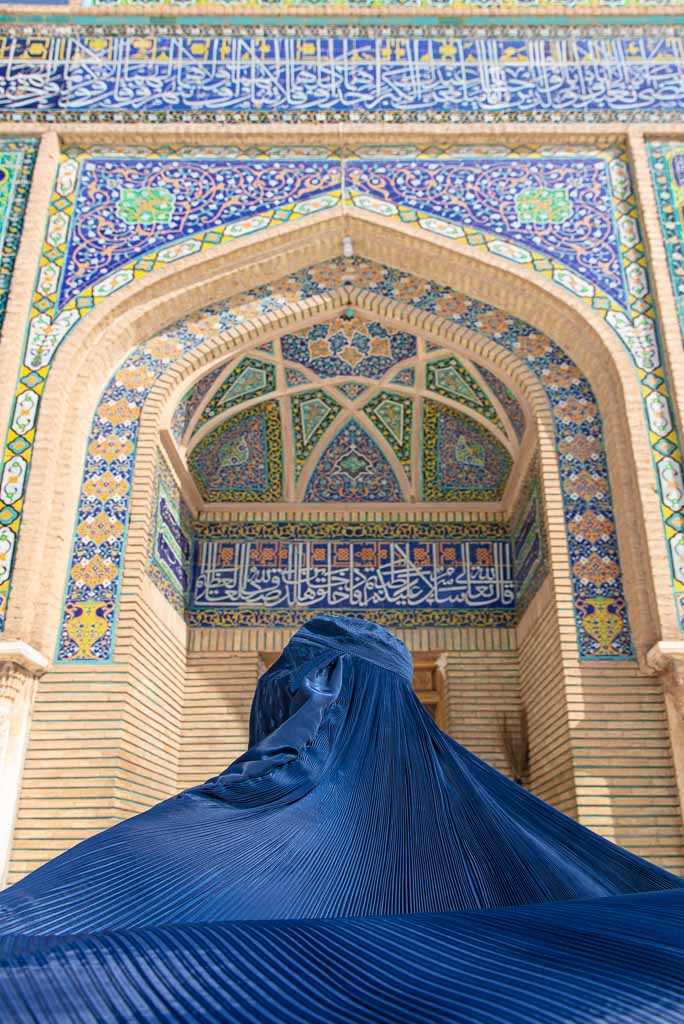
Herat Travel Guide + Photos
Updated January 2024, Herat Travel Guide + Photos was originally written in July 2019
Herat is easily a highlight of any visit to Afghanistan boasting an impressive number of important and historical sites around the city.
From dazzlingly tiled mosques to an ancient (though rebuilt) citadel, bazaars teeming with life, delicious food, cisterns, mausoleums, and more, Herat offers more than its fair share of things to do for a tourist.
Herat has a history that spans over two millennia and has seen countless empires rise and fall under the Afghan sun and has served as a capital of numerous kingdoms and empires over its long-standing history.
After three trips that have brought me back to Herat, here is everything you need to know before visiting the city including the best things to do in Herat, where to stay, where to eat, and more.
Start planning here: The Afghanistan Travel Guide
Need Travel Insurance and Evacuation Services for Afghanistan?
Start shopping for travel insurance plans over at IATI Insurance. Readers of the Adventures of Nicole get a 5% discount off your plan.
The Adventures of Nicole partners with Global Rescue to offer the world’s leading medical evacuation and security advisory services. To travel with peace of mind, shop evacuation coverage at Global Rescue.
Herat Travel Guide
Things To Do In Herat
Old City
Great Mosque of Herat & Tile Workshop
The current Great Mosque of Herat (also known as Masjid i Jami/Friday Mosque) dates back to the 13th century when Herat was under the rule of Ghyith al-din Mohammed Ghori, the leader of the Ghorid Empire.
However, the mosque’s roots go back even further as its foundations sit on the site of a 7th-century Zoroastrian fire temple that was expanded by the Ghazvanids and later founded as a mosque under the Khwarazmian Dynasty in the 11th century before being completely decimated by an earthquake in 1102, and then destroyed again by a fire.
Over the years the city of Herat would fall under the control of numerous different empires who have left a mark on the Great Mosque of Herat, architecturally speaking.
The extensive tile work of the Great Mosque of Herat is nothing short of impressive and if you spend some time slowly appreciating the architecture of the complex you will see elements of design from several different eras, dynasties, and empires.
One really interesting spot to see this is via an entrance on the southeast corner of the mosque complex where you will be able to see a beautiful Ghorid portal with Ghorid-era Kufic script on either side of the archway that was uncovered by a renovation crew in 1964.
You will inevitably pass by the Ghorid Portal if you pay a visit to the Tile Workshop.


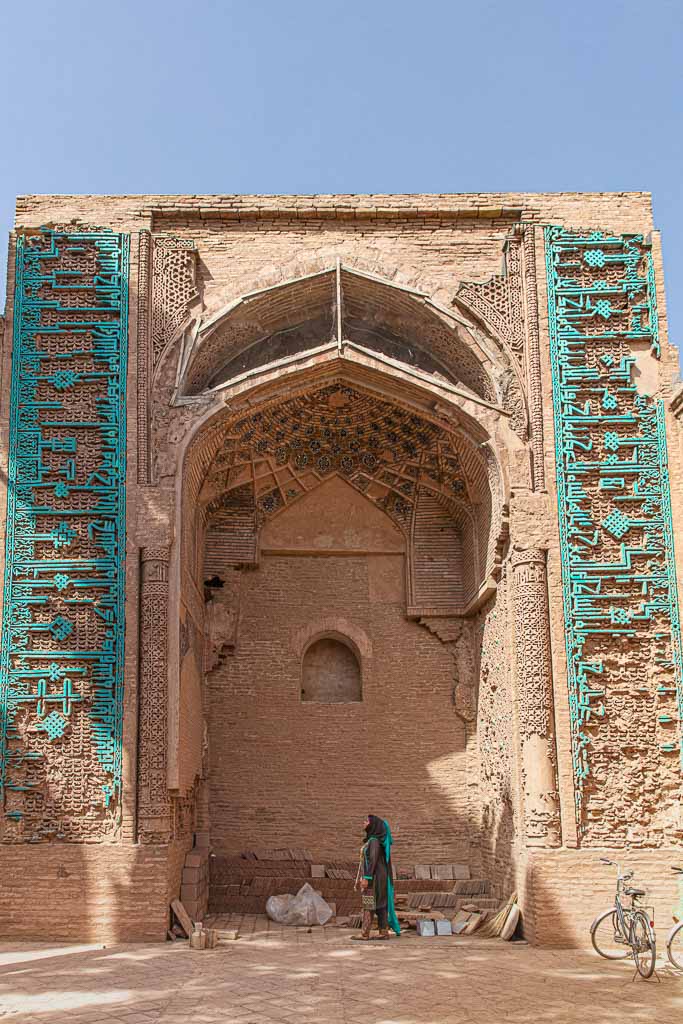
The newest addition to the mosque is the large garden at the east entrance, backed by the gorgeous eastern portal (it seriously is one of my personal favorite pieces of tile work!), but it’s worth noting that the eastern door is usually locked outside of prayer times. Most visitors will enter through the door on the north side of the mosque complex.
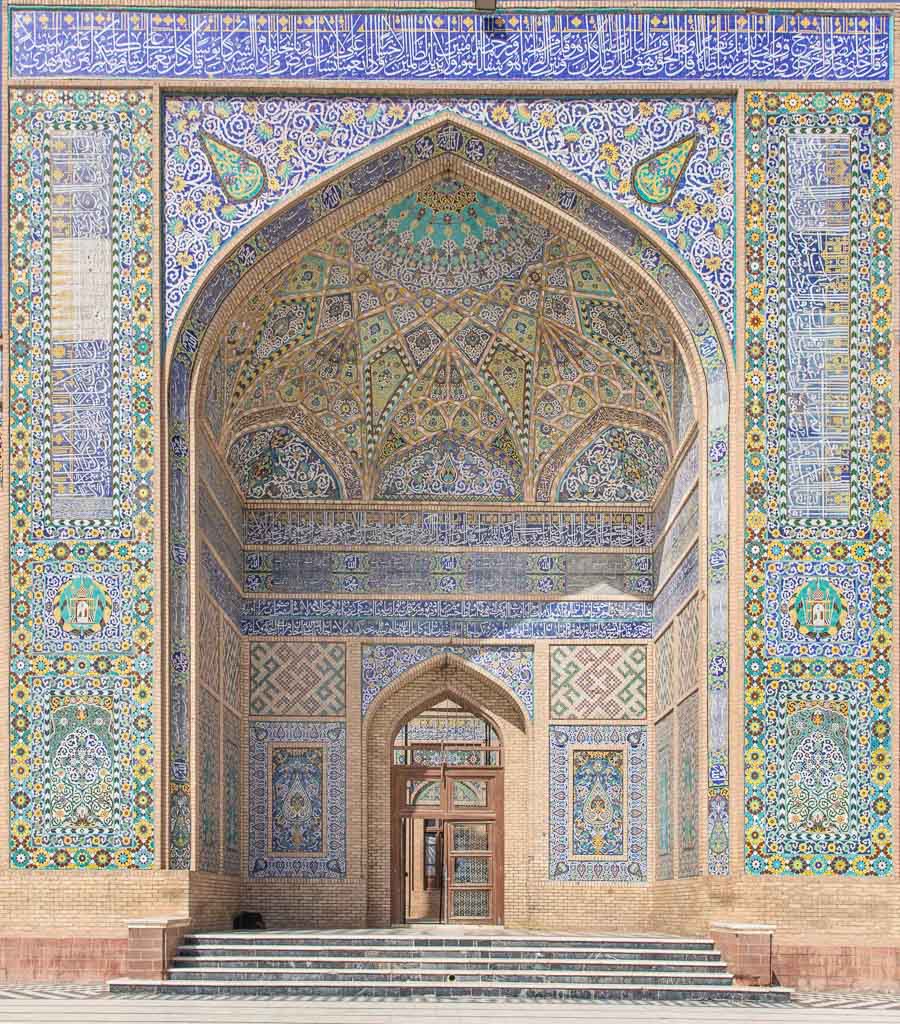
You will need to continue through a dark hallway from the north entrance, removing your shoes before you walk out onto the white floors of the courtyard. The layout of the Great Mosque of Herat is the classic four-iwan-surrounded courtyard.
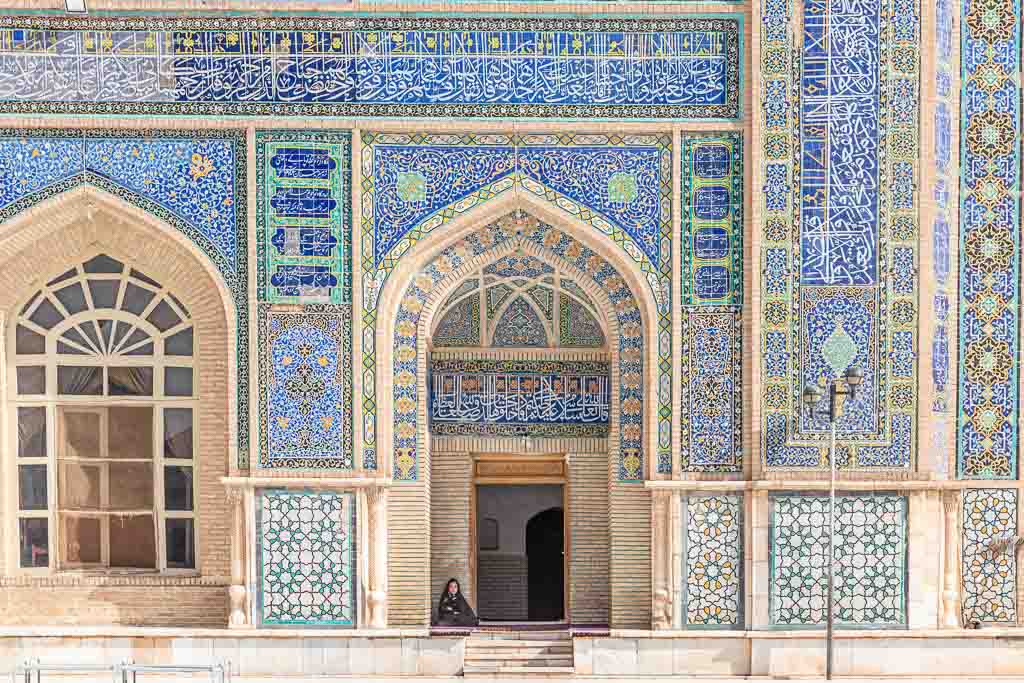
I recommend a morning visit to see the mosque in the best lighting as the midday sun can be a bit harsh and create glare from the glazing of the tiles. Also, a Thursday morning visit can be quite interesting as turbaned men come to shake the dust from the interior carpets in the courtyard before washing them and drying them in the sun.
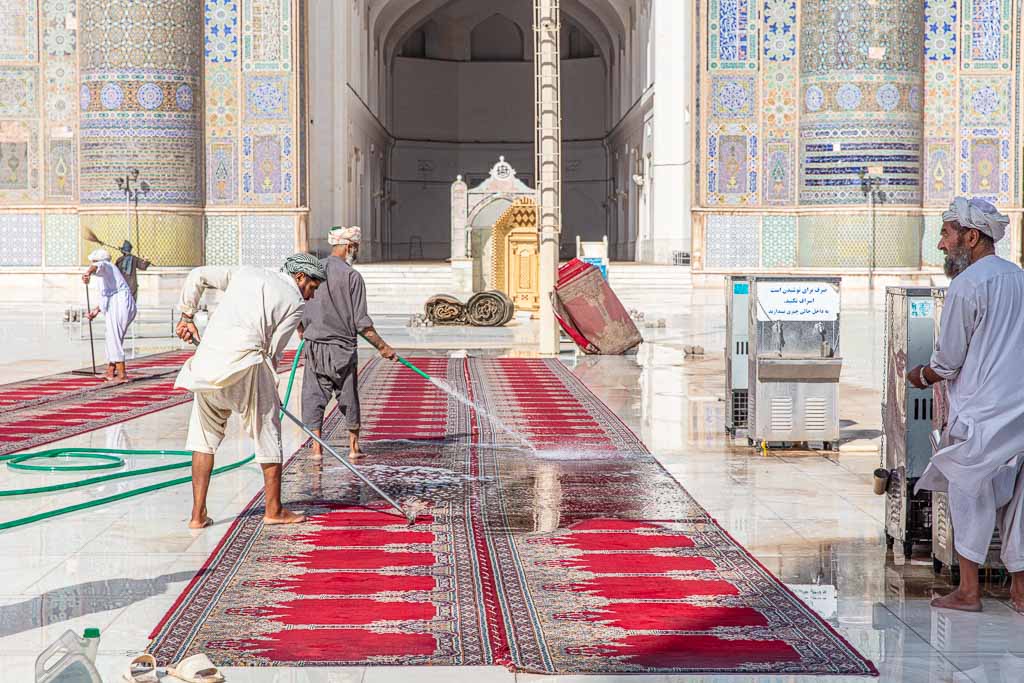
Upon paying a visit to the Great Mosque of Herat, be sure not to miss the Tile Workshop which is accessible by an entrance at the southeast corner of the complex.
Here you can witness artisans create new and repair broken existing tiles. Tiled mosques are in a constant state of repair as the tiles fall off and break over time. What makes the Great Mosque of Herat unique is that these tiles are all still entirely handmade and repaired/created on-site.
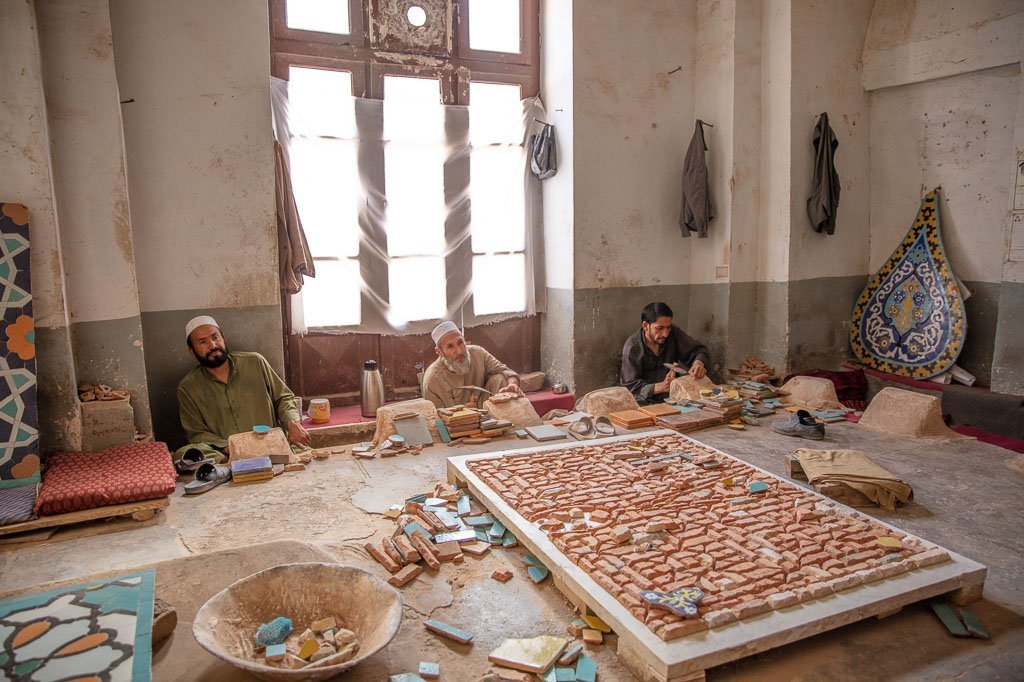
Ask around for a man named Hassan who overlooks the Tile Workshop, he will more than likely tour you around the workshop and explain the processes of tile making.
This typically begins with a visit to a hazily sunlit room where men are hard at work chiseling clay tiles. Next, you’ll have the chance to see how the ain’t for the tiles is made and then the tiles being painted before being baked.
You can purchase souvenir tiles to take home with you as the artisans do create ones for exactly this reason. The price is on donation, in which it is recommended to give $10-20 USD per tile.

Mosque hours: 24 hours, but best to visit outside prayer times for non-Muslims
Tile Workshop hours: 8:30-16:00, closed Fridays
Entrance fee: Free (donations are accepted by both the mosque and workshop)
Herat Citadel + Natural History Museum & Museum of Communications
The Herat Citadel is another major landmark, sitting on a small hill named Kuhandazh in the north of the Old City.
It dates back to the arrival of Alexander the Great in 330 BC following the Battle of Gaugamela.
You will also hear the citadel referred to as Alexander’s Citadel and the Qala Iktyaruddin. Over the last 2,000 years, the Herat Citadel has been destroyed and rebuilt countless times and has been used as a base and headquarters by numerous rulers.
It is thought that Alexander had the citadel built atop the site of an Achaemenid-era Fortress that likely dated back to 700-500 BC, so there is the possibility that its history stretches back even further.
Following Alexander that site served as the capital for the Ghorids, as well as the Ghazvanids and the Seljuks.
By 1221 it would be completely destroyed by the Mongol Hoard, rebuilt by the Kartids, and then destroyed again by the Timurids in 1380.
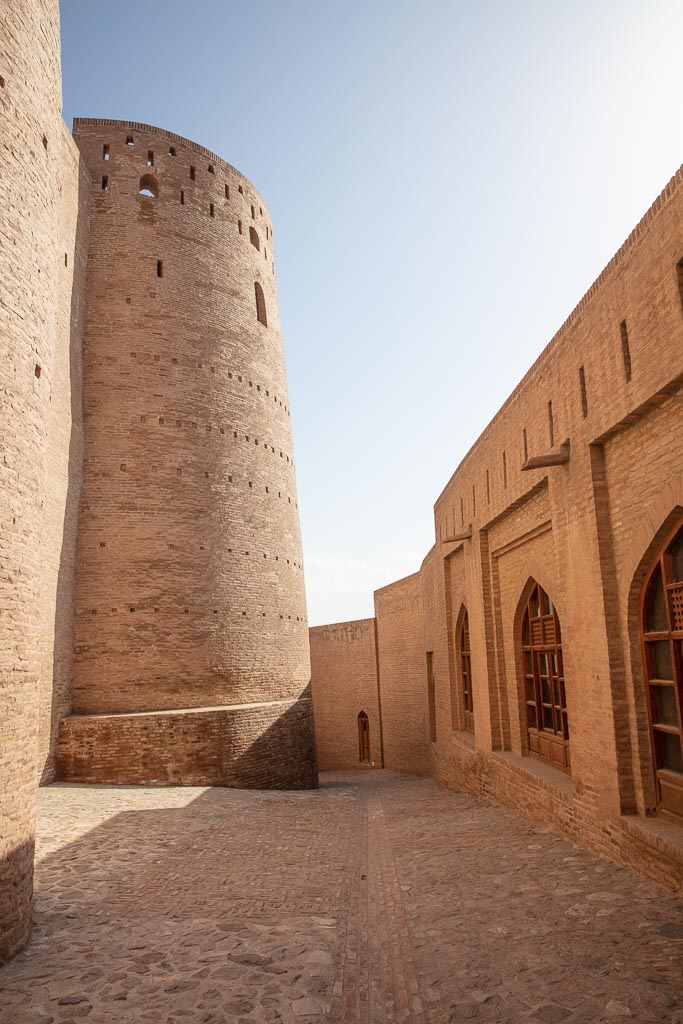

Following the 1380 destruction, the Herat Citadel would be rebuilt and serve as a seat of power for Shah Rukh and his wife Gowar Shad Begum.
Times since this reign have been tumultuous for the Herat Citadel with it being badly damaged during various wars between the 16th century and now, extensive damages during the 19th century Anglo-Afghan War as well as the more recent Afghan Civil War of the 1990s.
In the 1950s the citadel was slated to be demolished, but a stop was put to that plan, and from 1976 to 1979 the Herat Citadel was excavated and restored by UNESCO.
Between 2006 and 2011 the citadel was completely renovated by Afghan artisans and craftsmen that were funded by the Aga Khan Trust for Culture and US and German governments.
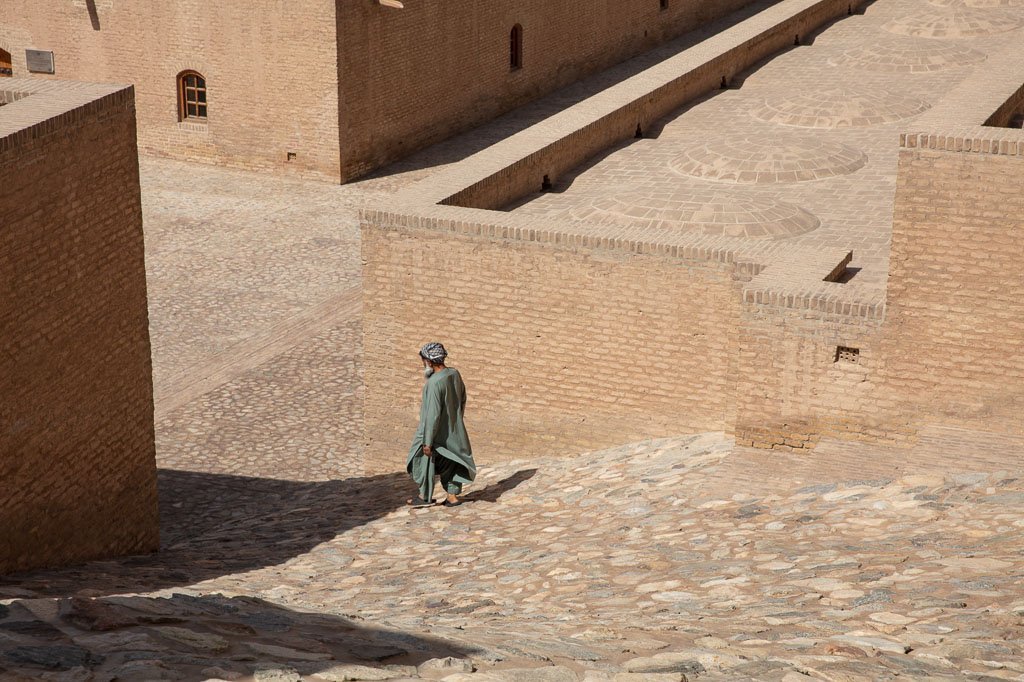
The Herat Citadel houses two museums, the Natural History Museum and the Museum of Communications.
The Natural History Museum houses over 1,100 pieces from around the Herat region as well as the rest of Afghanistan, though only about 250 are on display at any given time.
The Museum of Communications displays numerous pieces from telegraphs, to fax machines, computers, and even mobile phones.
Note that the Herat Citadel entrance fees include entrance to the Museum of Communications, but do not include entrance to the Natural History Museum.
Citadel hours: 10:00-16:00, closed Fridays
Citadel entrance fee: 500 AFS, 250 AFS additional for cameras
Citadel phone number: +93 728084000
Natural History Museum hours: 8:00-16:00, closed Fridays
Natural History Museum entrance fee: 500 AFS, 500 AFS additional for cameras
Natural History Museum phone number: +93 799251186
Museum of Communications hours: 8:00-16:00, closed Fridays
Museum of Communications entrance fee: Included with your ticket into the Herat Citadel
Museum of Communications phone number: +93 728084000
Chahar Suq Cistern
The Chahr Suq Cistern was constructed in 1634 by then-governor Hassan Khane Shamlo as a water storage site for Herat’s residents.
The structure was made of fired brick and included a 20-meter-high dome.
It sits right at the center of the Herat Old City on the southeast corner of Darb e Kandahar Street & Darb e Iraq Street/Bazaar Mesegarha Street and somewhat serves as a main point of reference for the area.
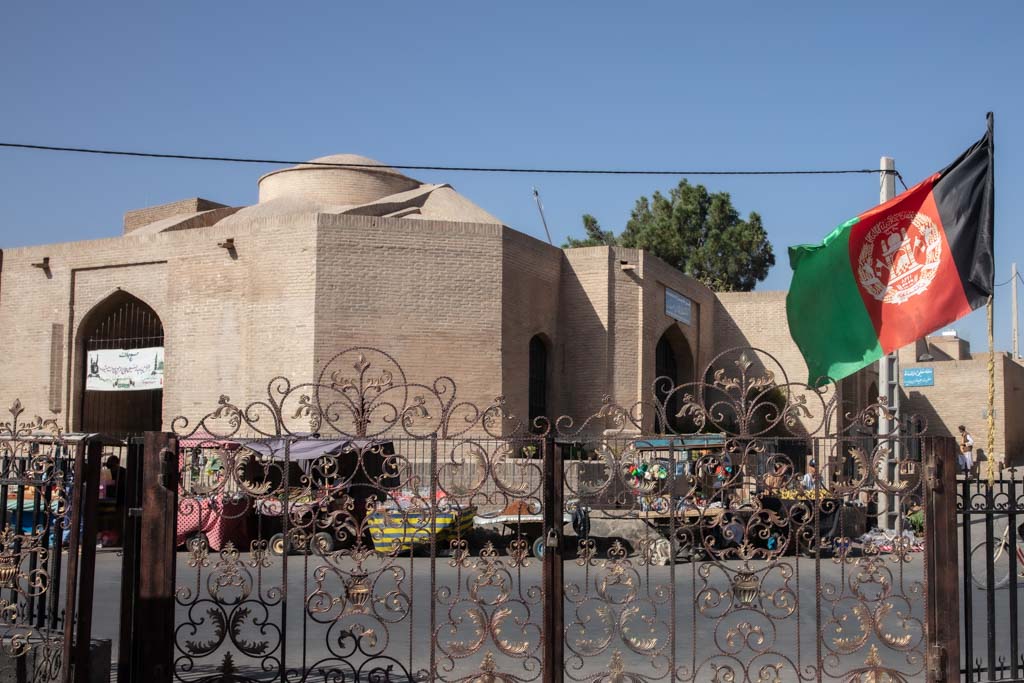
Chahr Suq Cistern and other smaller cisterns, such as the famous Malik Cistern, can be found scattered around Herat and were actually in use by residents until the 1970s.
The cistern has since suffered from over 50 years of neglect and warfare, falling into disrepair.
Extensive renovation efforts have been underway to restore the historic Chahr Suq Cistern which is once again used for cultural events and exhibitions.
Note that in order to enter the Chahr Suq Cistern you will need to present a copy of your tourism authorization letter (you’ll find more info on how to get this letter later in this post).
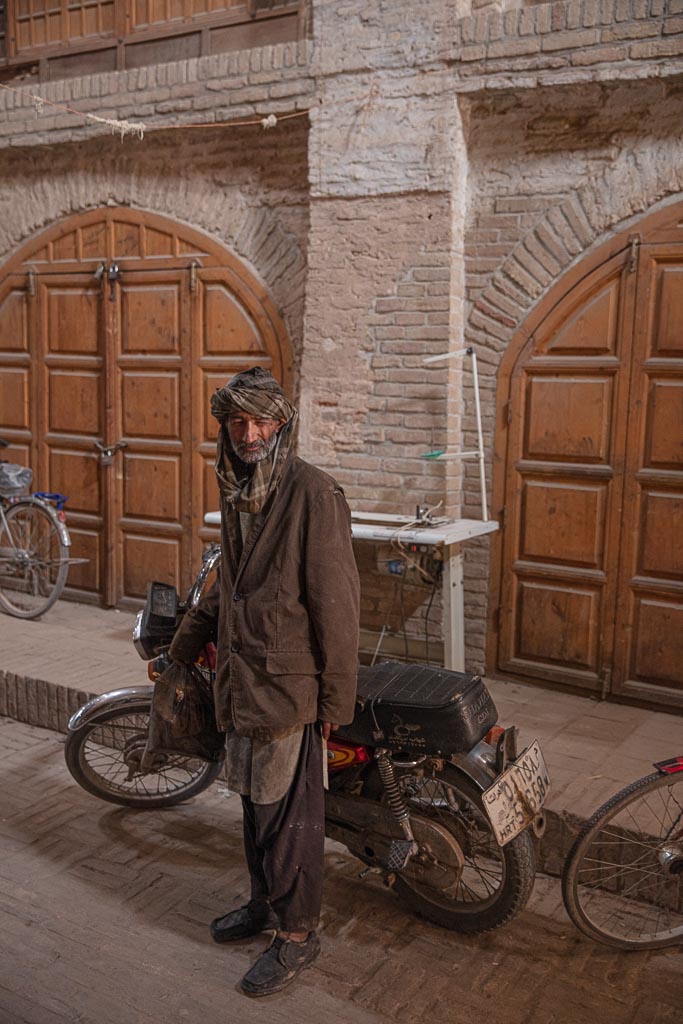
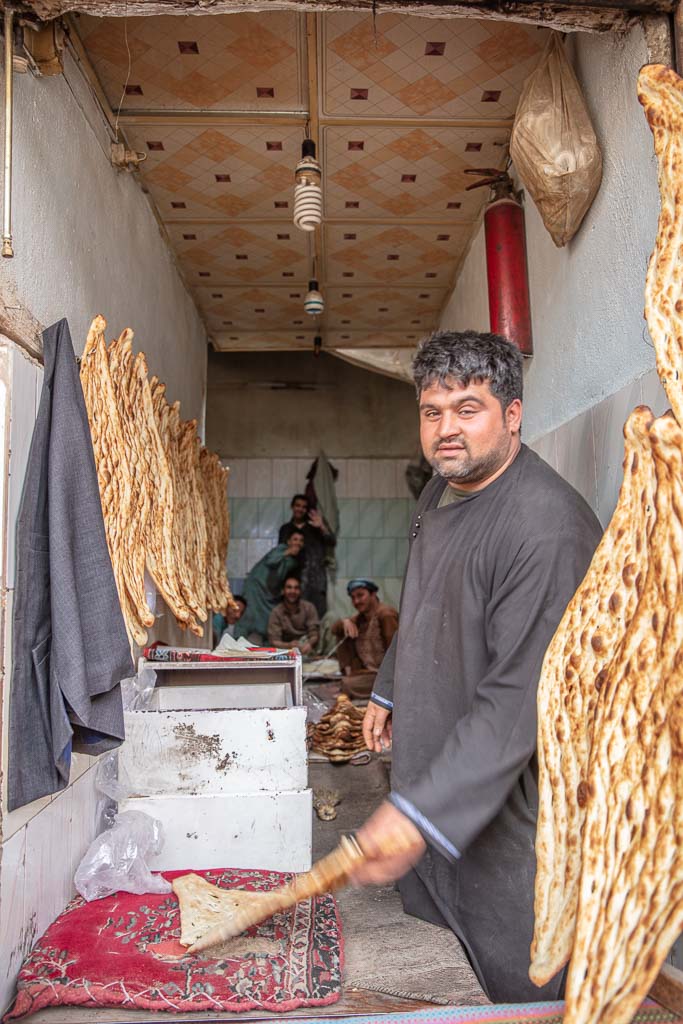
Herat Bazaar
The Herat Bazaar is the heart and soul of Herat, located smack in the center of the Old City.
Like most other bazaars in Central Asia, Herat’s, of course, is sprawling and offers up just about anything you can imagine for sale.
After having traveled in Iran, the Herat Bazaar felt more similar to the bazaars around there than it did to others I’ve wandered in Afghanistan, Uzbekistan, and so on.
Interesting and historic sections of the Herat Bazaar include the Tim Che Bazaar (small bazaar), Che Abreshim (silk bazaar), Tim Che Arbab Zadeh (old covered bazaar), Antiques Bazaar, Caravanserai Akhund Zadeh, and Caravanserai Zard.
Starting next to the Chahr Suq Cistern at the center of the Old City is Che Abreshim, a good place to go to purchase hand-woven silks as well as Kashmir scarves and blankets.
Che Abreshim has been recently renovated and is in better shape than other historic parts of the Herat Bazaar.


Tim Che Bazaar and the attached Caravanserai Zard are located on the southern end of the Old City near the Kandahar Gate, both in deteriorating condition after years of neglect.
Caravanserai Zard served as a guesthouse for traders arriving to Herat from the south and Tim Che Bazaar would have been where they sold their goods.
To the north of Chahr Suq Cistern and just south of the Herat Citadel you will find the Tim Che Arbab Zadeh.
Despite recent renovations, only a couple of the stalls inside are occupied by merchants, one selling traditionally made carpets, one repairing jewelry, and the other selling chadri.

A short walk west of the Chahr Suq Cistern will bring you to the Caravanserai Akhund Zadeh, which is worthy of a visit to admire the traditional Herati architecture here despite it not being well-cared for.
The Caravanserai is still in use, though not for its original intended purpose as a guesthouse but now as a storage area for local merchants.
Across the street from the Great Mosque of Herat to the north, enter into the Antiques Bazaar and get lost in the labyrinth of shops selling beautiful blown glass and traditional jewelry.
Of course, you’ll find the lapis lazuli that Afghanistan is famous for on sale around these antique shops.
Yu Aw Synagogue
Herat was once home to a bustling Jewish quarter, in fact, the Momanda neighborhood located just west of Chahr Suq Cistern on the southside of Dar e Iraq Street was once known as Mahalla-yi Musahiya, translating to ‘the neighborhood of the Jews’. Yu Aw Synagogue was once the most prominent of four synagogues located here in the Momanda neighborhood.
After years of neglect following the exodus of Jews from Herat (and Afghanistan) Yu Aw Synagogue as well as its counterparts has fallen into disrepair.
In 2020, Yu Aw Synagogue was restored architecturally to be used as a preschool.
The other three synagogues are also undergoing restorations, two of which will be used as children’s schools and the third is already in use after being converted to a mosque.
North of the Old City
Gowar Shad Mausoleum & Musallah Complex
The majority of the Musallah Complex suffered extensive damages at the hands of the British military, so only a little of what remains is currently visible.
In 1863 it was badly damaged by British artillery fire and then in 1885 the British Army destroyed the remaining ruins of the Gowar Shad Mosque & Madrasa and the Sultan Hussein Baiqara Madrasa out of fears that the invading Russian Army may use the complex as a base if they reached Herat (they did not) in what is known as the Panjdeh incident.
In 1931 and 1951 Herat was rattled by earthquakes that brought down all but five of the minarets of the complex.
Around a kilometer north of the Herat Old City will bring you to the Gowar Shad Mausoleum and Musallah Complex. As the area is walled off you will need to call the caretaker Gulam Haider Quasi in advance of your visit to let you in.
If you do just show up there is typically a guard on duty here who can make the phone call to open the gate.
Once inside the gates, you’ll first visit the most intact of the remaining structures of the Musallah Complex, the Gowar Shad Mausoleum set in a lovely garden.
The mausoleum serves as the tomb of Queen Gowar Shad Begum, the wife of Shah Rukh and Timurid ruler who made the call to move the Timurid Empire’s capital from Samarkand to Herat.
Completed in 1432 for Gowar Shad, she was not the first to be buried here. In 1433 she and Shah Rukh’s son, Baysunghar suffered an early death and was laid to rest inside the mausoleum.
The Gowar Shad Mausoleum’s interior is quite impressive with a dome that is decorated with faded reds and blue with intricated gold leaf details. It houses her tomb as well as Baysunghar’s and those of several other relatives.
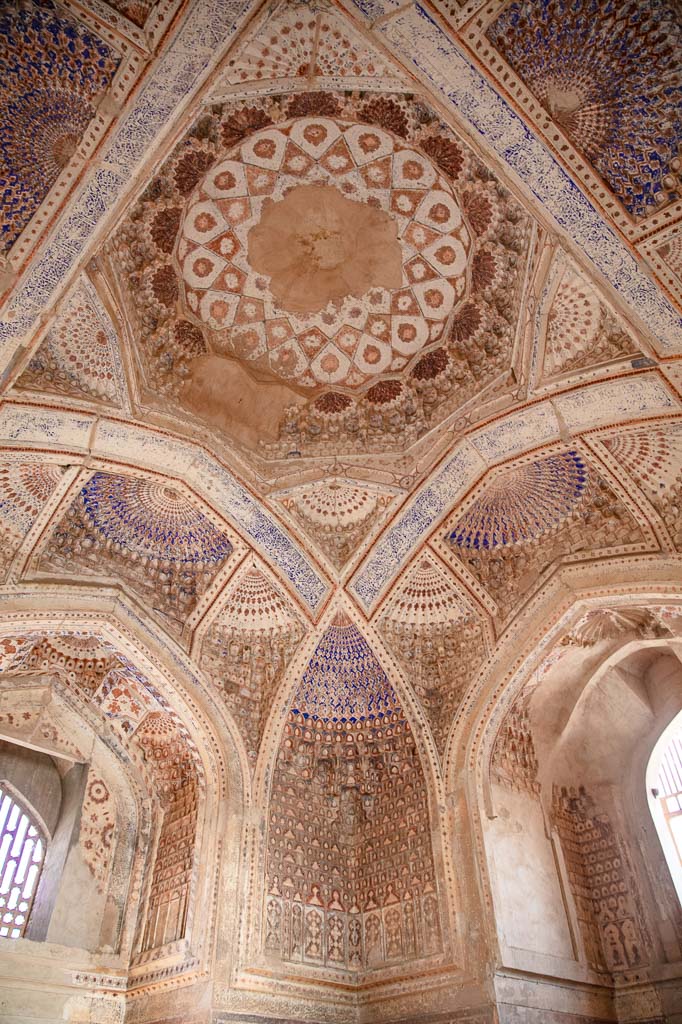
When leaving the Gowar Shad Mausoleum don’t miss the quaint Mausoleum to Alisher Navoi located just north of the entrance portal to Gowar Shad.
It houses a small tomb to Alisher Navoi, the famed poet, mystic, and painter. If you’ve traveled in Uzbekistan prior to your arrival in Afghanistan you likely already know that Alisher Navoi is their national poet and is considered to be the greatest Chagatai poet and writer of all time.
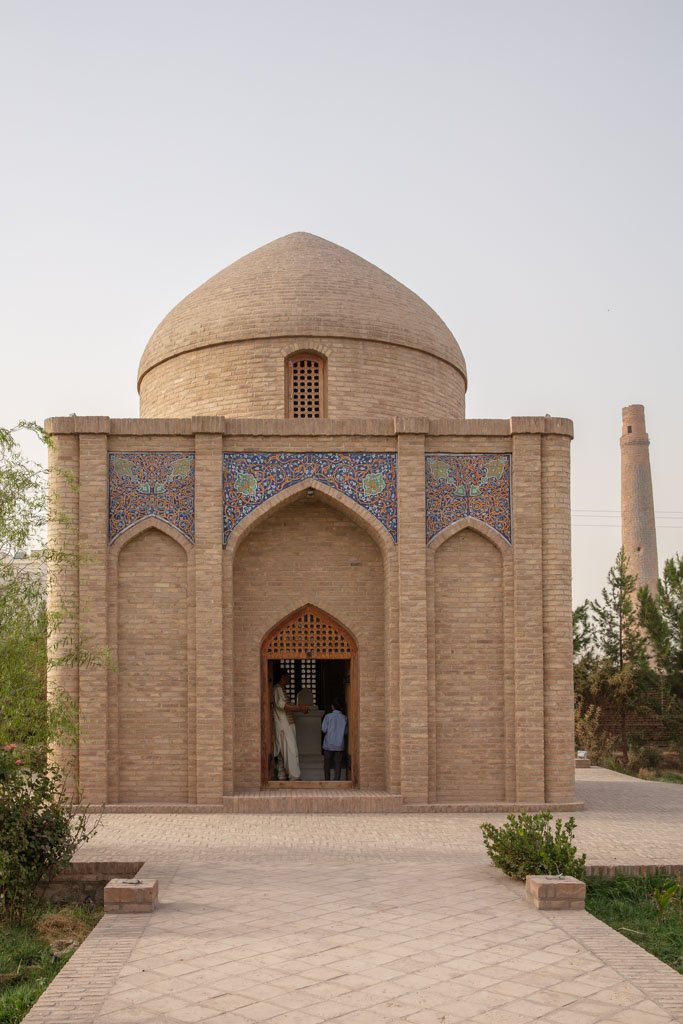
Continuing north of Gowar Shad Mausoleum and Alisher Navoi’s Mausoleum will bring you to the once-mighty Musallah Complex. Not much remains of the complex, in fact, only five Minarets of Musallah out of the original 20 are still standing.
The four minarets sit about 100 meters north of Gowar Shad Mausoleum and can be seen from quite a distance, with Shahzadegan Road running in between them.
The four minarets once sat at the four corners of the destroyed Sultan Hussein Baiqara Madrasa. None of the madrasa remains, but you can find pieces of broken tiles and remnants of the building.
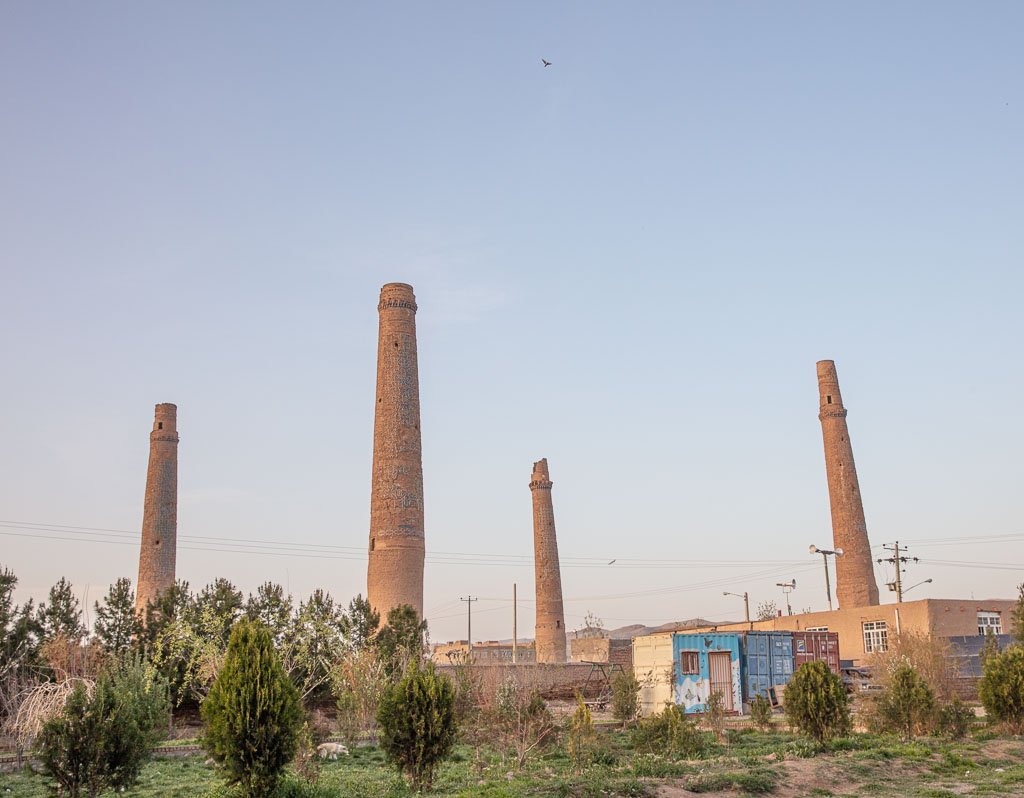
A fifth minaret, commonly referred to as Minaret #5 sits just a few meters outside Gowar Shad Mausoleum.
The minaret once flanked the entrance portal of the destroyed Gowar Shad Madrasa dated back to 1417.
It was at risk of falling over, so in 2003, numerous cables were tied around it to help hold it up (they’re still there).

A stump of a minaret exists just south of the Gowar Shad Mausoleum where the Gowar Shad Mosque once stood.
Note that in order to enter the Gowar Shad Mausoleum and Musallah Complex you will need to present a copy of your tourism authorization letter (you’ll find more info on how to get this letter later in this post).
Gowar Shad/Musallah Complex hours: 24 hours, but you will need to call caretaker Gulam Haider Quasi ahead of time
Gowar Shad/Musallah Complex entrance fee: Free, but donations are accepted
Gowar Shad/Musallah Complex phone number: +93 799058197
Shahzadeh Tomb of Two Princes
Just south of the Musallah Complex, you can visit the Shahzadeh Tomb of Two Princes to see some phenomenal Timurid architecture. Two mausoleums sit side by side on the complex grounds that date back to the 9th century.
The Tomb of Abdullah displays grand examples of Timurid tilework on its sun-faded exterior.
The Tomb of Qasim features an exquisitely painted cupola inside in addition to some intricate tilework.
The Tomb of Abdullah is the western building on the complex, the Tomb of Qasim sits to its east.
Shahzadeh Tomb of Two Princes hours: No strict hours, but the gate may be locked if the caretaker isn’t around
Shahzadeh Tomb of Two Princes entrance fee: Free, but donations to the caretaker are accepted
Northeast of Herat
Guzargah Mausoleum
Hiring a taxi (about 390 AFS each way) is the best way to visit the Shrine of Khodja Abdulla Ansari in the little village of Guzargah, three kilometers northeast of Herat.
The complex serves as a shrine and funerary to the 11th century Herati saint and Sufi mystic Khodja Abdulla Ansari.
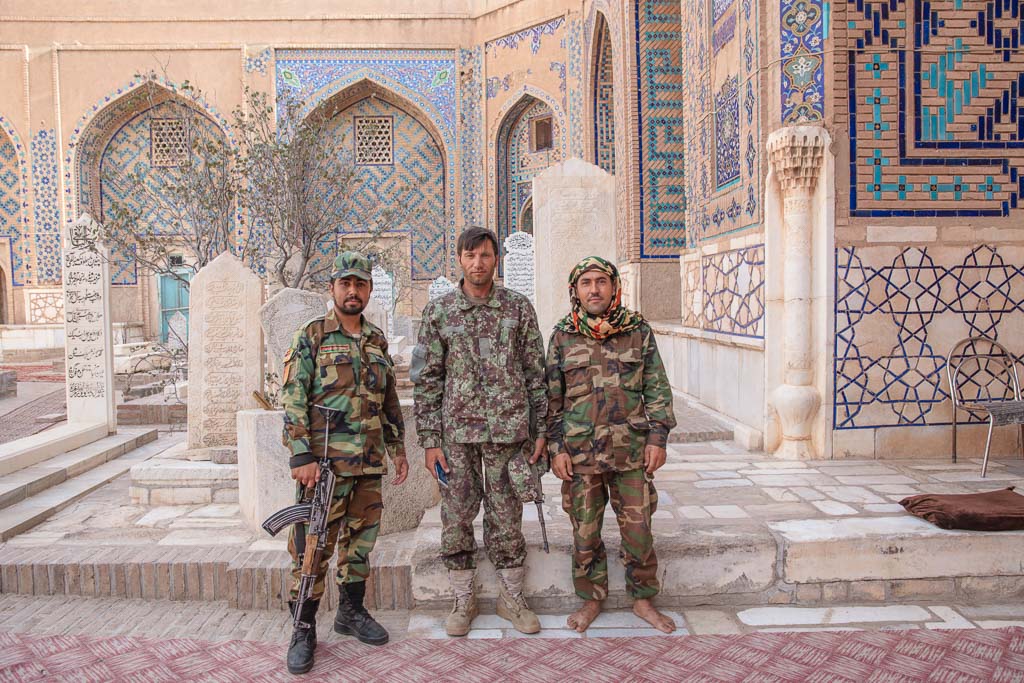
Khodja Abdulla Ansari is actually quite famous and has several shrines dedicated to him in a handful of countries.
Following Abdulla Ansari’s death in 1098 he was buried here in Guzargah, making the site become a popular Sunni pilgrimage site.
The shrine wasn’t completed until 1425 when Timurid-era ruler Shah Rukh commissioned it.
To enter the Guzargah Complex you’ll first pass under a beautifully tiled gate. Once on the grounds, you’ll see a small cemetery out front of the Shrine of Khodja Abdulla Ansari.
To your right when standing in front of the southwest iwan that serves as the entrance portal to the shrine will be the important Zarnegar Khana which served a khanaka.
The Zarnegar Khana was used as a khanaka (resting place for Sufi pilgrims and Islamic students) until 1968 when it was converted into an elementary school.
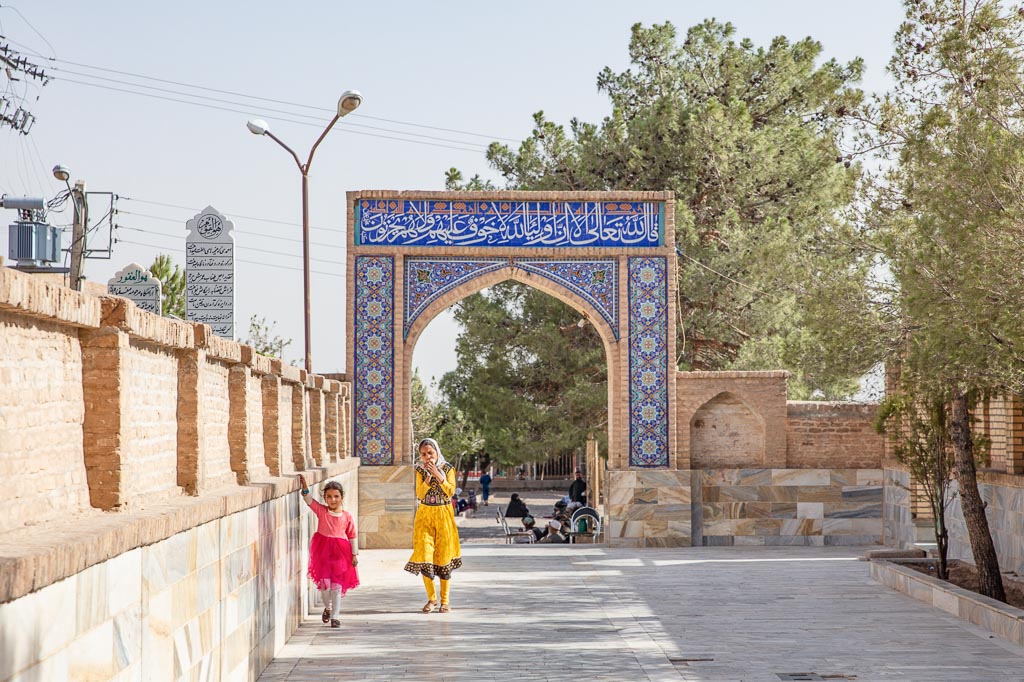

Upon entering through the entrance portal into the Shrine of Khodja Abdulla Ansari you will remove your shoes before crossing into the courtyard.
The courtyard is surrounded by four iwans in classic mosque style, decorated with Timurid-styler tile work that is slowly crumbling away.
In front of the northeast iwan, you will see the obvious Tomb of Abdulla Ansari.
The courtyard also features numerous graves of other important local religious leaders and mystics.

Southwest of the Shine of Khodja Abdulla Ansari you’ll see a narrow walled garden. The garden features the dodecagon-shaped Namakdan that served as a salt cellar, a pavilion that dates back to the 15 century, and an underground mosque.
Guzargah Complex hours: Open sunrise to sunset
Guzargah Complex entrance fee: Free, but donations are accepted
Jihad Museum
On the northeast fringe of Herat along the Rudaki Highway next to Bagh e Mellet Park is the Jihad Museum that was funded by the Herati Mujahideen fighter turned politician Ismail Khan and opened in 2010.
The purpose of his opening of the Jihad Museum is in hopes to educate the future generation about the Afghan Civil War and the uprisings that led to the defeat of the Soviet Union’s attempt to take over the country in the 1980s.

The lower level of the Jihad Museum features an impressive display of weapons, guns, and even landmines that were used throughout the fight against the Soviet invasion and later in the Afghan Civil War. Outside an array of fighter jets, tanks, and helicopters from the wars are on display.
The upstairs features models and displays depicting various battles during the Soviet invasion and civil war. There is also a room that displays photos of the thousands of men who were casualties of the invasion and civil war.
Jihad Museum hours: 8:30-16:00 daily
Jihad Museum entrance fee: 750 AFS, an additional 750 AFS for cameras
Jihad Museum phone number: +93 799550093
Takht e Safar Park
Just a little east of the village of Guzargah (and just a bit northwest of the Jihad Museum) is Takht e Safar Park.
While it’s not really a destination to go out of your way for, it is worth a stop if you’re visiting Guzargah, especially in the late afternoon for sweeping aerial views over Herat.
South of Herat
Pul e Malaan
Pul e Malaan is a 22-arch bridge crossing the Hari Rud River, believed to have been built in the 12th century by the Seljuks.

Legend has it that two sisters by the names of Bibi Nur and Bibi Hur collected eggshells that they later crushed to mix with clay to make the bricks Pul e Malaan is built out of.
For this reason, it’s believed that Pul e Malaan has stood the test of time and not crumbled under the countless floods of the Hari Rud River over the years.
To get to Pul e Malaan you’ll want to hire a taxi driver to bring you there, wait for you, and bring you back to the city as the bridge is located about six kilometers south of the city and there’s not really a lot of traffic passing by the area (the bridge is only for foot traffic).
You’ll need to negotiate a price with a taxi driver prior to departing or just have your accommodation or host help you with this (you don’t need to worry about this if you’re on a tour).
You can expect to pay somewhere between 800 and 1,300 AFS depending on your haggling skills and how long you plan to stay for.
The Tourism Authorization Letter
A tourism authorization letter is needed to enter several sites around Herat. If you are booked on a tour you will not need to worry about this as your guide should have already handled it for you. If visiting independently it’s not much of a worry as it is quite easy to obtain and it is entirely free of charge.
In order to get a tourism authorization letter, you will need to visit the Tourism Office located just outside of the Nazary Hotel. The letter is simply a letter you will write and that the office will stamp.
The letter just needs to be written on a standard piece of A4 paper and include your name and that you are in Herat for tourism purposes. After a few minutes and surely a glass of chai your letter will be stamped and you can begin touring around the city. Once you’ve gotten it stamped go make several copies of the letter as most everywhere you visit will want to keep a copy of it.

Where To Sleep In Herat
- Budget: Mowafaq Hotel $20/night, double
- Midrange: Kakh Hotel +93 799828245
- Midrange: Herat Bustan Hotel +93 728790132
- Splurge: Nazary Hotel Starting at $90/night, double

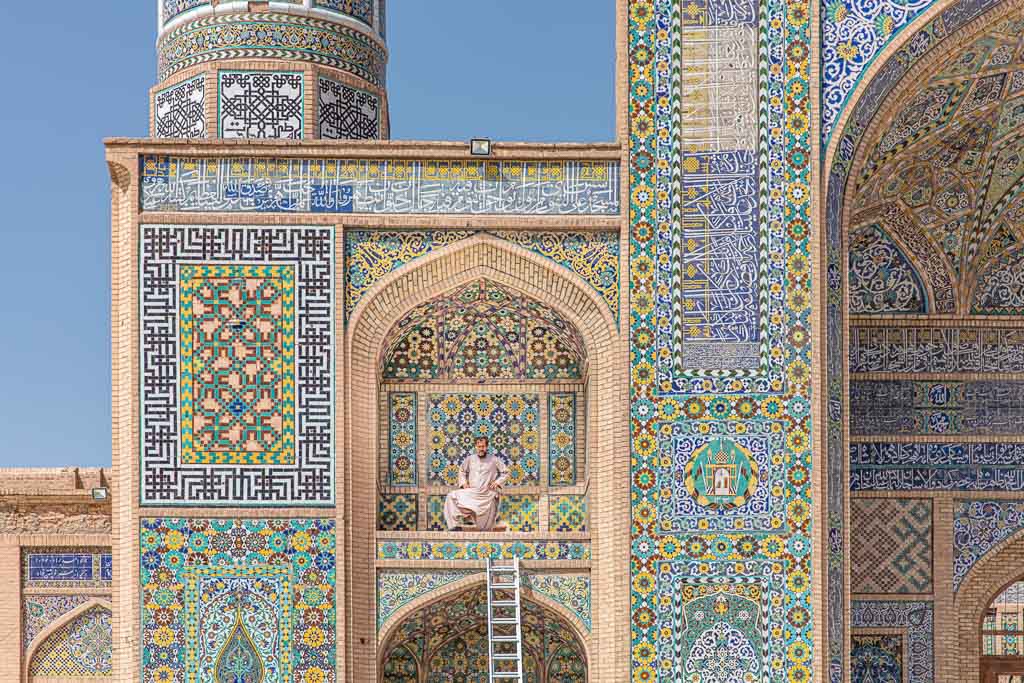
Best Restaurants in Herat
Herat is known for serving up some of the best challow kebab in Afghanistan (though many Afghan citizens will argue that their own city has the best- a fight I don’t plan to battle). A well-known dish of Herat is kichiri (sticky rice with meatballs and yogurt), but it’s worth mentioning that the Persian influence from just across the border is undeniable in Herati cuisine.
Many of Herat’s eateries off outdoor seating in tapchans (a daybed that’s typically covered) set in a garden.
Qaqnoos
Qaqnoos is located about 6 kilometers south of the city center along the Kandahar-Herat Highway, making it a perfect stop on your way to or from Pul e Malaan or the Herat Airport. The menu is decently long, but I personally recommend ordering up a challow kebab, along with a fresh delicious naan and wash it all down with a glass of dooh (sour yogurt drink with chopped mint and salt).
The restaurant offers both indoor seating and outdoor tapchans in its garden.
Qaqnoos hours: 10:00-24:00
Qaqnoos phone number: +93 700401235
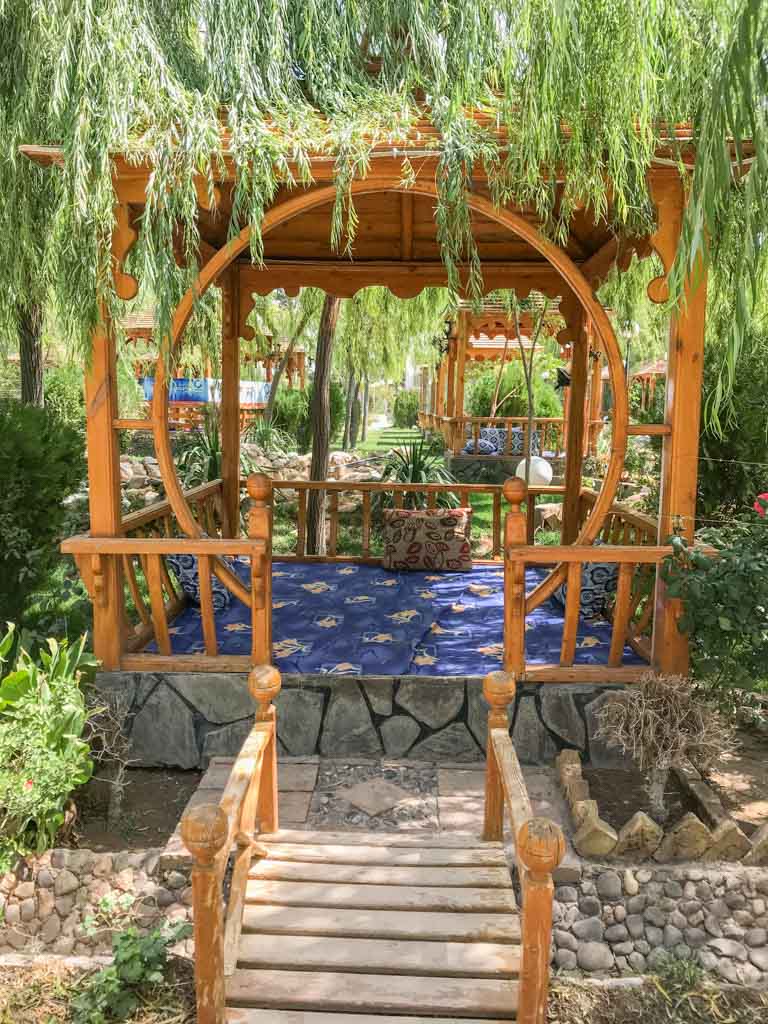
Arman Restaurant
Arman is a good spot to head to relax and watch the day go by as you enjoy some shisha from their tapchans. Located on the southwest side of Taraqi Park, Arman offers up the usual Afghan and Persian dishes.
Arman Restaurant hours: 10:00-23:00
Nawid Restaurant
Nawid’s menu serves up the typical Afghan options such as kebab, pulao, mantu, and so on, but also offers up a scattering of international dishes like pizza, spaghetti, and hamburgers. Nawid is also located on the west side of Taraqi Park.
Nawid hours: 7:00-23:00
Nawid phone number: +93 799363638
Chahar Fasl Juice
Chahar Fasl Juice is located on the south side of bustling Chowk e Ghola Square and offers an array of juices and ice creams as well as a handful of fast food items. The upstairs decor looks like a preteen girl was given full reign (think bright colors, lots of shiny decorations, and neon lights!). The saffron ice cream is a must, the cardamom ice cream comes in a close second, and Afghan-style shir yakh is always a fan favorite.
There’s also a restaurant to the south of the Grand Mosque of Herat called Chahar Fasl as well and the two are often confused with one another.
Chahar Fasl Juice hours: 7:00-23:00

Getting In & Out Of Herat
To get elsewhere in Afghanistan your safest option is by flight as the roads that connect Herat with Mazar e Sharif, Kabul, Kandahar, and Ghor/Bamyan are all controlled by the Taliban at certain points. Several times per day there are flights from Kabul to Herat and back on Kam Air (Ariana also offers the route, but they are far less reliable). From Kabul, you can connect to Mazar e Sharif, Kandahar, and other cities in Afghanistan.

Crossing The Border To Iran
It is possible to enter/exit Afghanistan along the Iran-Afghanistan border at Islam Qala (Dogharoun on the Iranian side), I have even done so myself.
I exited Afghanistan to Iran in April 2019 and it was a straightforward and simple border crossing procedure. You can read more on the details about the Islam Qala-Dogharoun Border Crossing here.
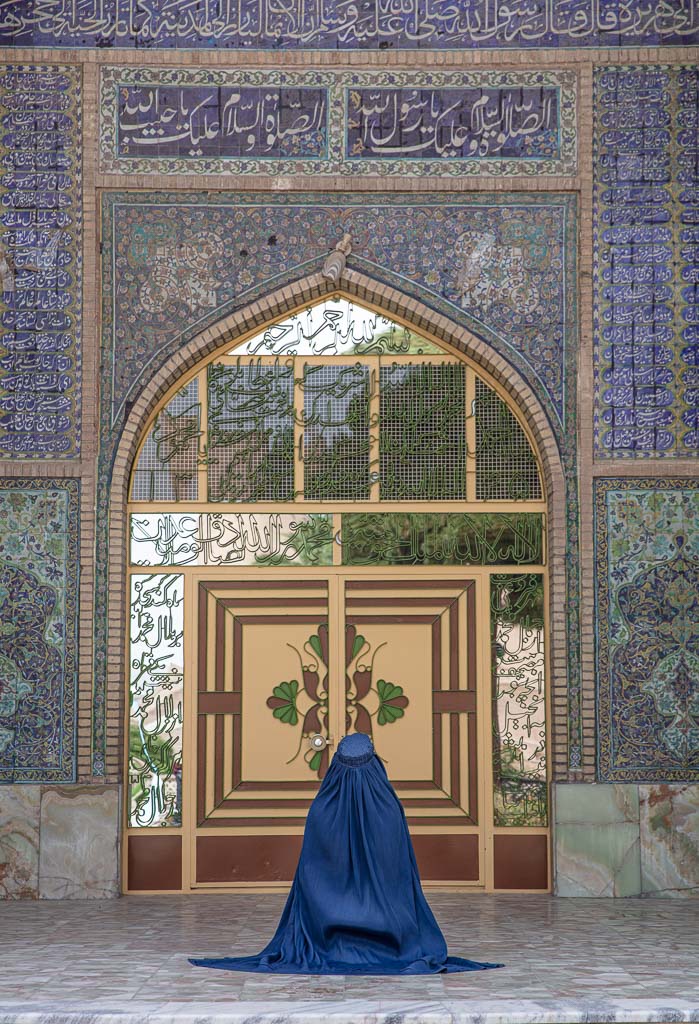
Crossing The Border To Turkmenistan
There is a border crossing that connects the city of Herat to Mary and onto Ashgabat at the Toraghundi-Serkhetabet border crossing. I have never personally done this crossing, but I have heard of travelers successfully crossing here as recently as the summer of 2023.
In the past, the border seemed to be sporadically closed to foreigners, so do plan ahead with the use of local contacts to determine if this border crossing is a potential possibility. You can check here for updates.
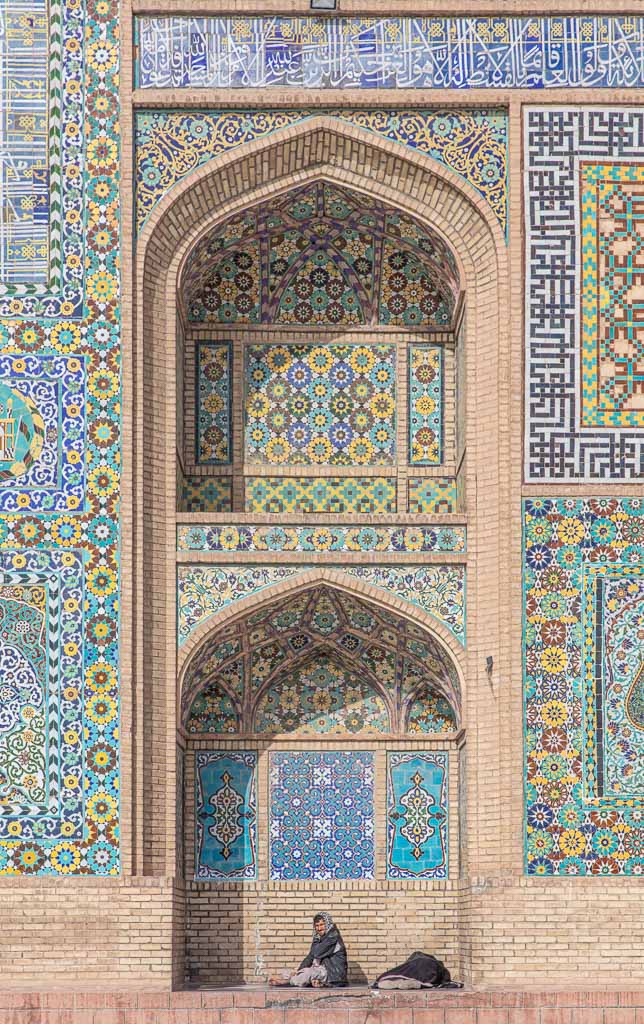
Safety in Herat
The city of Herat is relatively safe by Afghan standards. Due to the long travel times from Kabul, Bamyan, or Kandahar, flying is recommended to reach the city.
I highly recommend using a local guide such as Let’s Be Friends Afghanistan to help you plan a safer visit to Afghanistan.
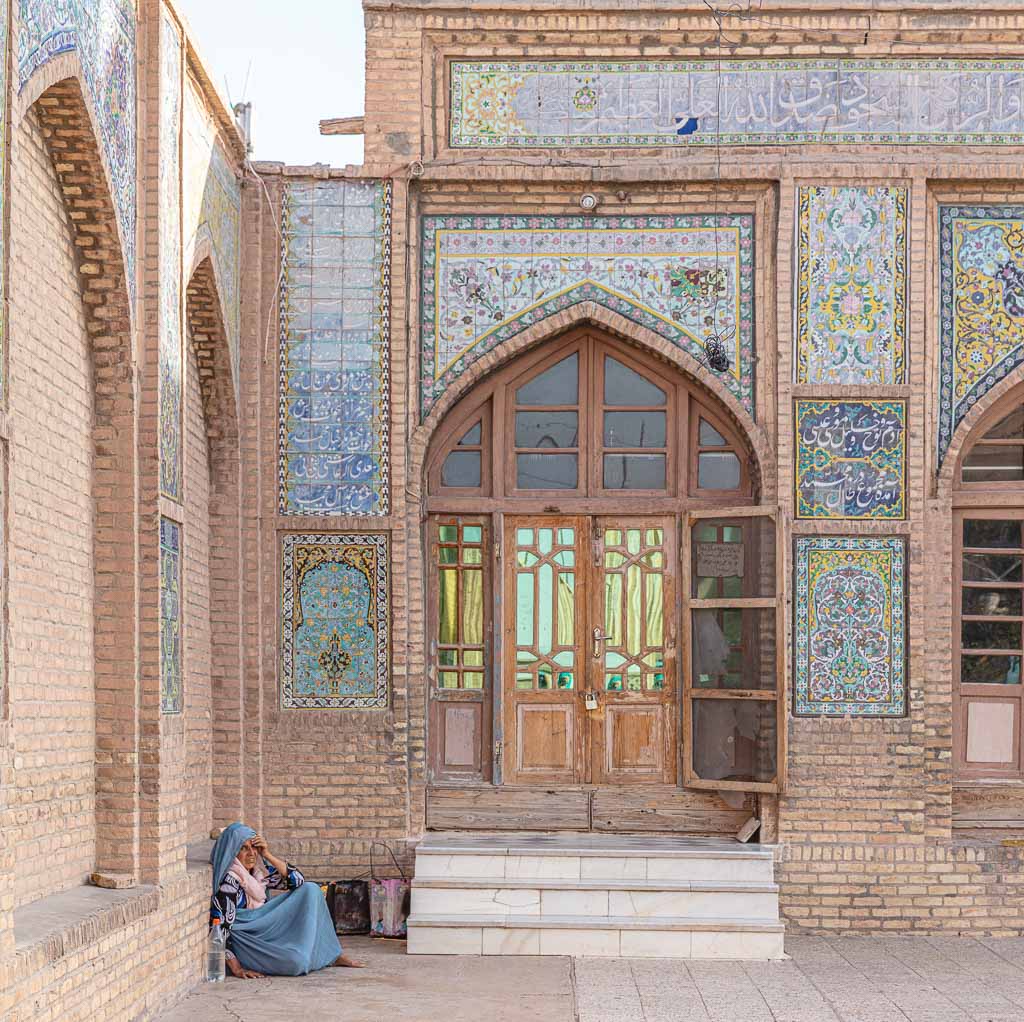
Have Any Herat Travel Questions?
Ask your Herat travel & Afghanistan questions in the comments section below!
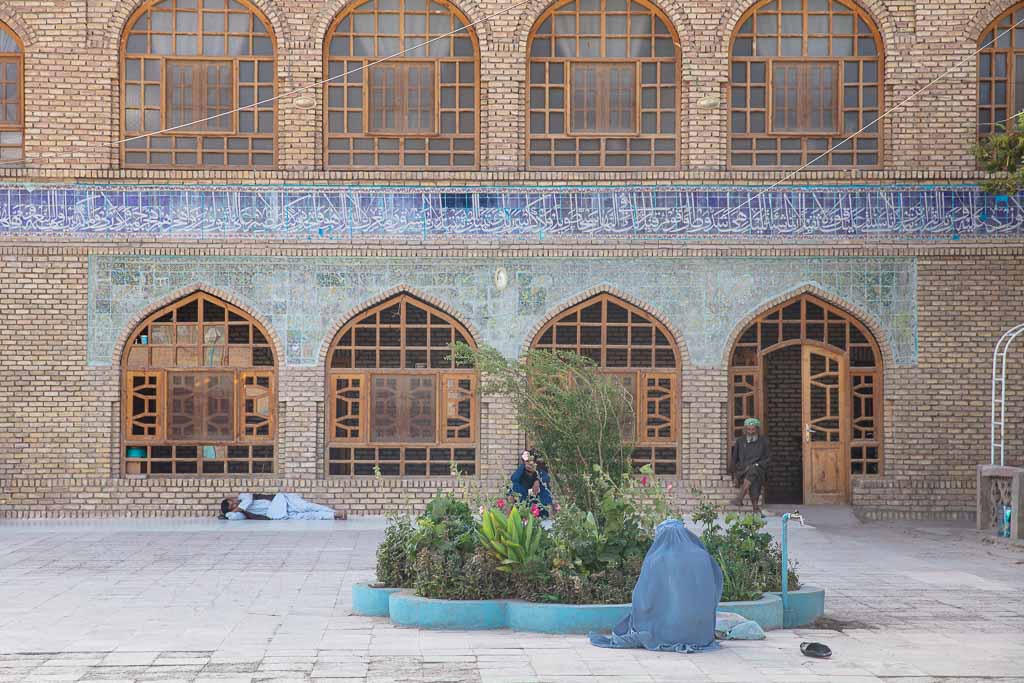
More Posts from Afghanistan:


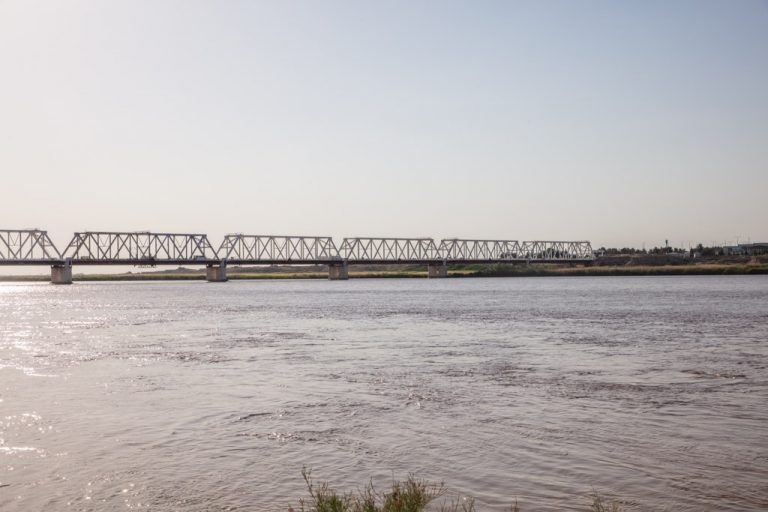
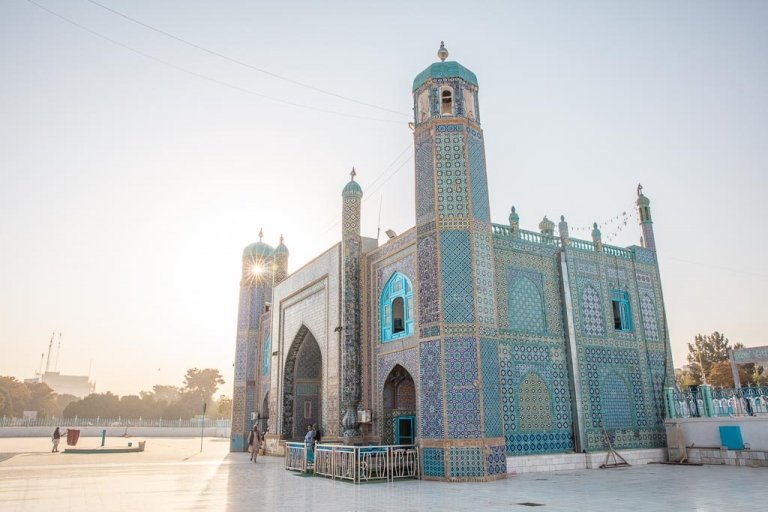
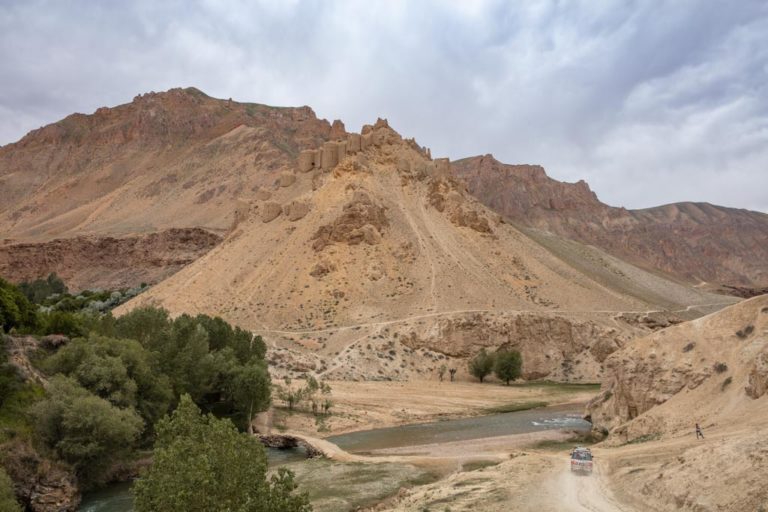
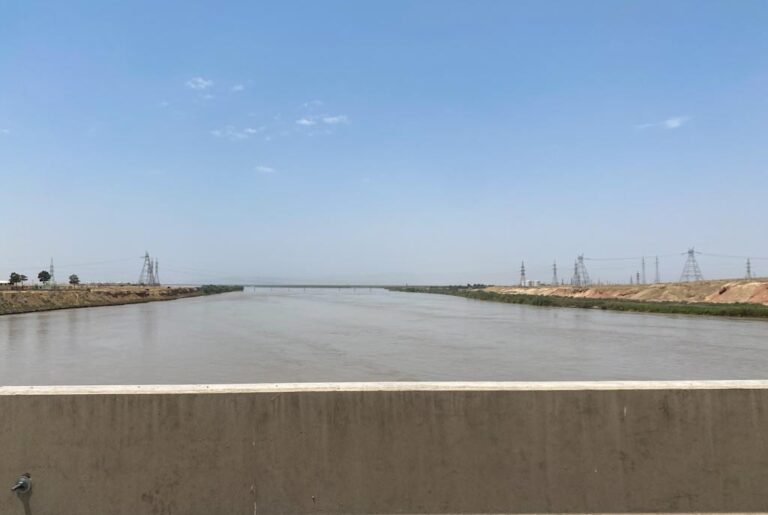



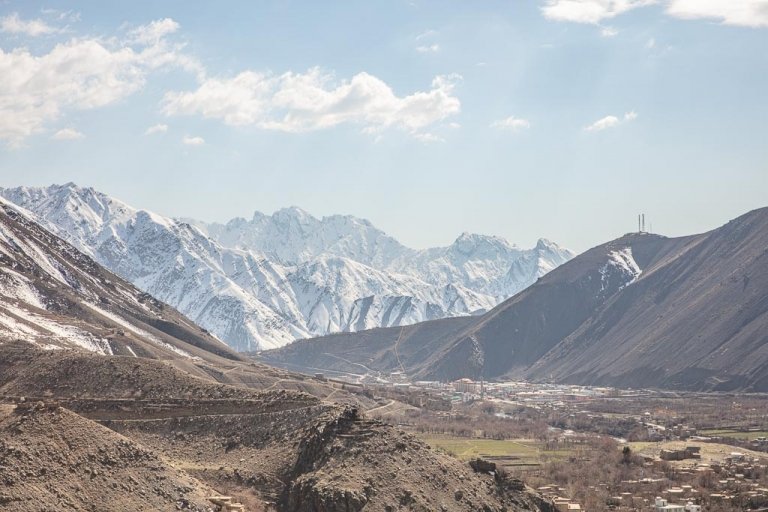


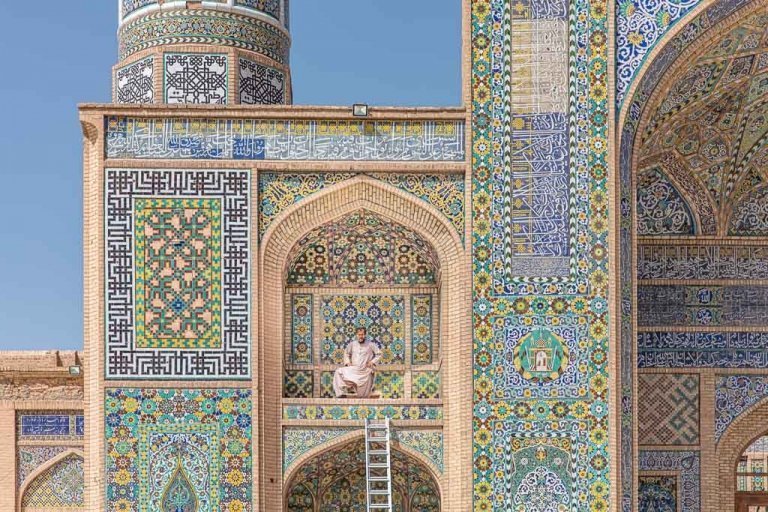


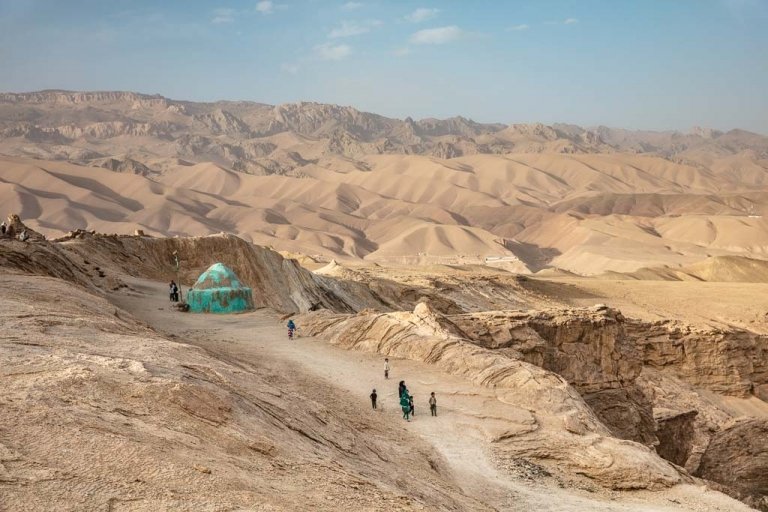

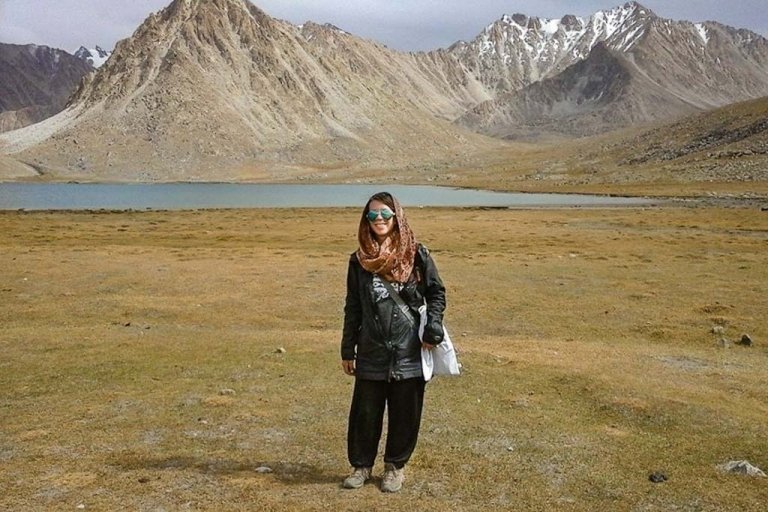
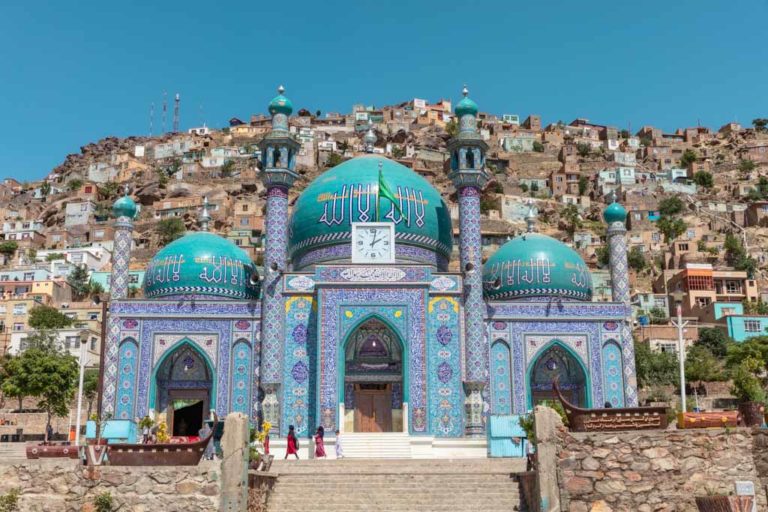

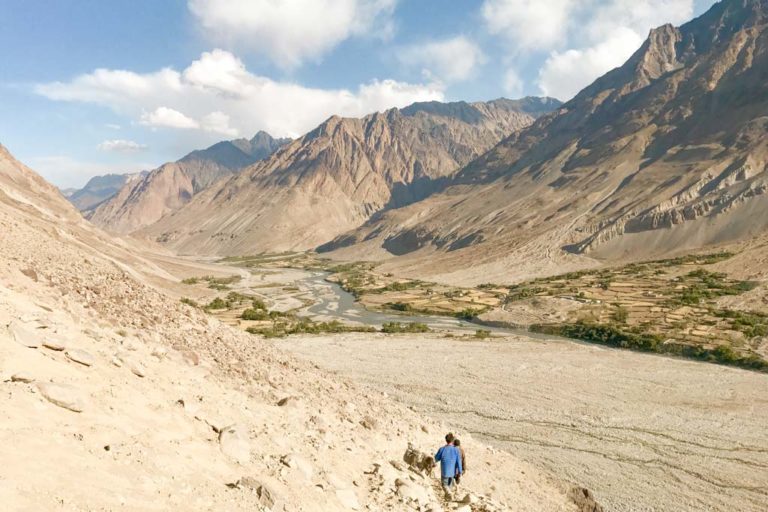
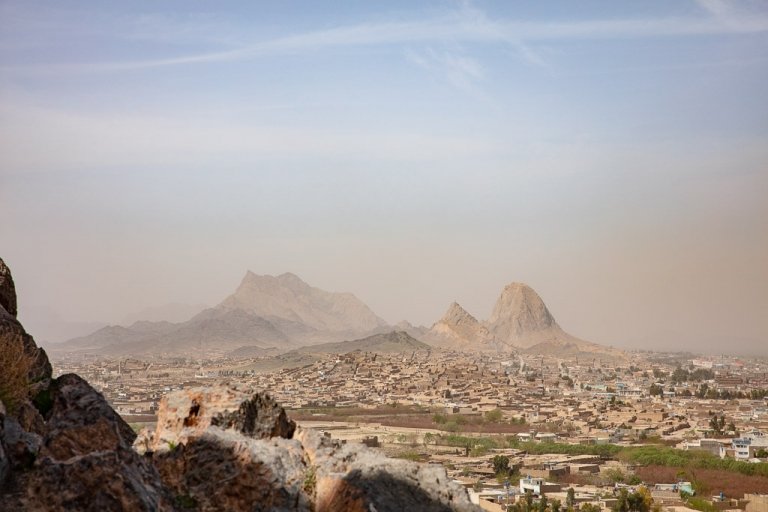
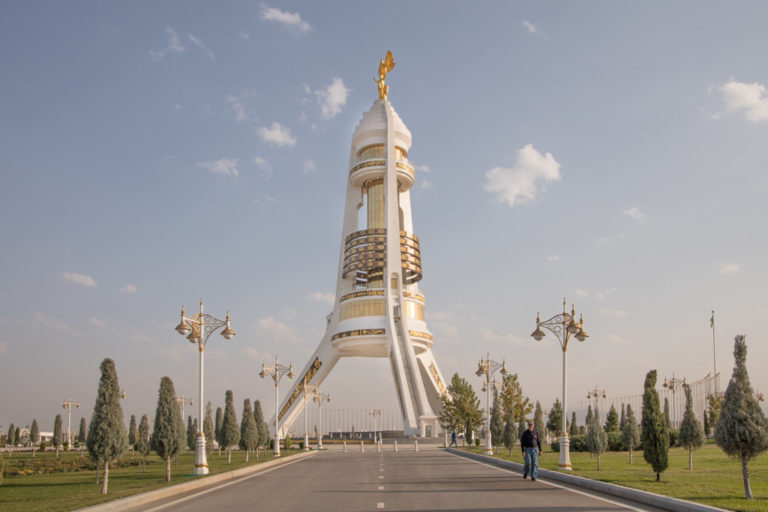
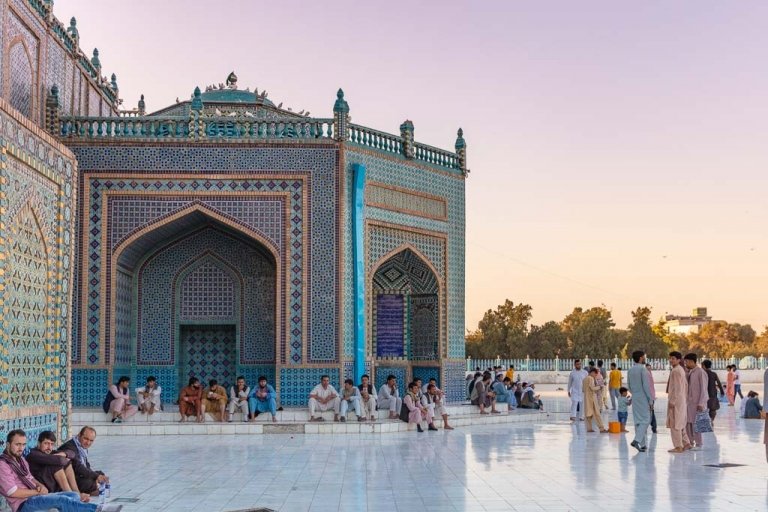

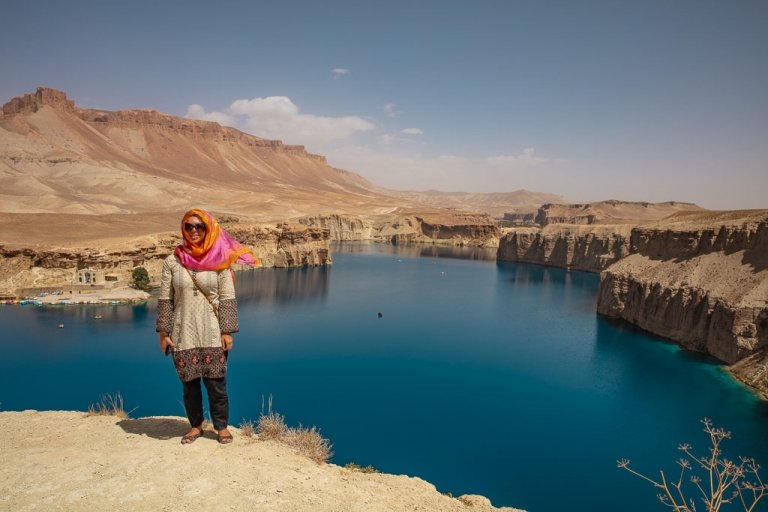
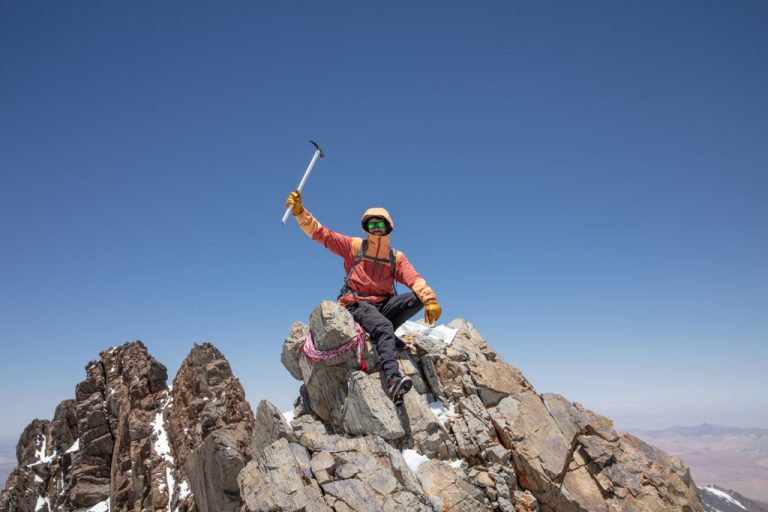
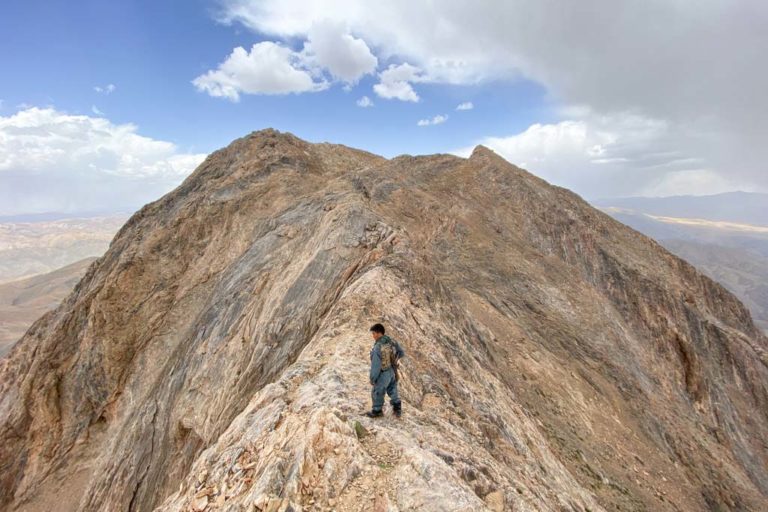




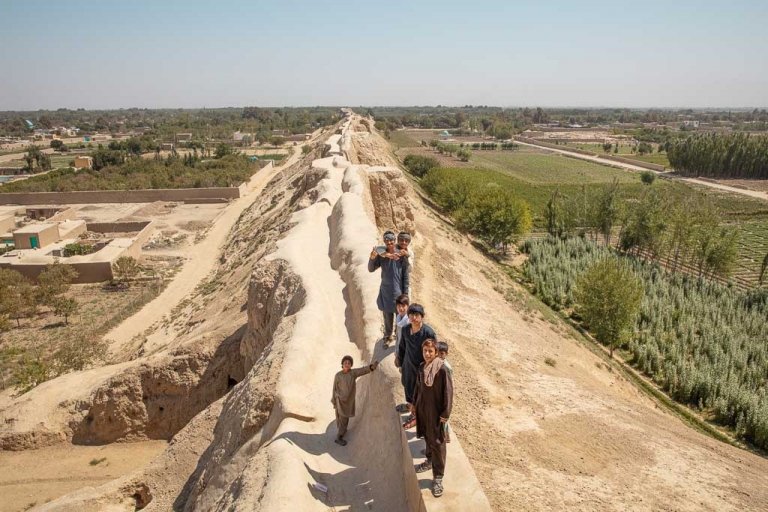
Nice overview makes me want to see the area but the Taliban comments were a little uncomfortable
It’s too bad Herat is somewhat cut off for that reason.